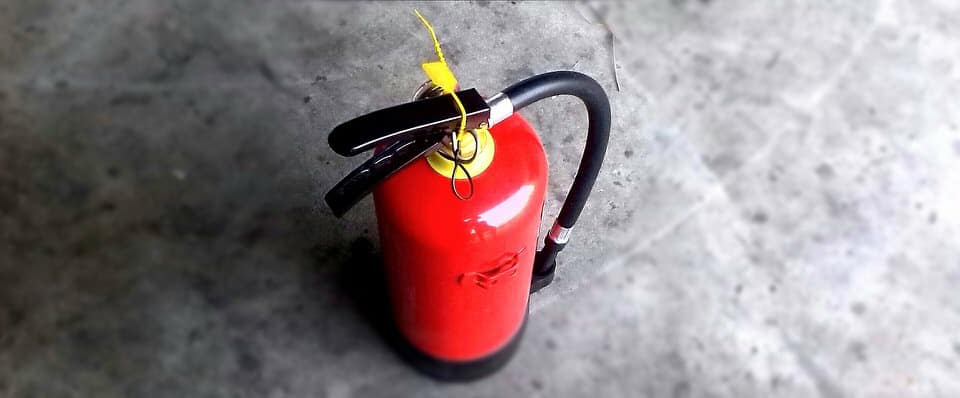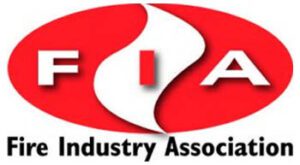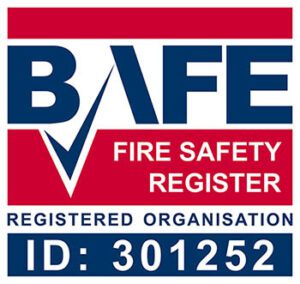
We often get asked what fire extinguisher should not be used in confined spaces. The truth is, not all fire extinguishers are the same.
When a fire breaks out in your commercial property, you could be forgiven for simply reaching out for the first fire extinguisher that comes to hand. However, not all fire extinguishers are the same, and the wrong selection could actually put your safety at even greater risk.
Ensuring that all workspaces are equipped with suitable equipment is a responsibility that every business owner must immediately acknowledge, not least when dealing with confined spaces. Here’s everything you need to know.
The additional dangers of confined spaces
With regards to fire safety, confined spaces are defined as any setting where the limited size of an enclosed area causes an increased chance of accidents and hazardous situations that may lead to injuries or damage to company buildings. Some of the most common examples are vessels, cellars, boiler rooms, and utility vaults.
Confined spaces can be permanent workspaces or temporary construction sites where chemical work, welding, and flame cutting take place. Either way, the additional risks caused by working confined spaces include;
- A lack of oxygen
- Too much oxygen
- Flammables and explosives
- Gas contamination
- Excessive heat
Confined spaces are capable of causing serious injuries, and even death, very quickly while it is often harder to evacuate the areas. When the source of danger is a fire, immediate action by a trained employee that knows how to use the right fire extinguisher will save lives. Once again, though, avoiding the wrong equipment is imperative.
Which fire extinguishers should be avoided in confined spaces
Fire extinguishers fall under several categories. Currently, in the UK fire extinguishers include; water, water mist, water spray, foam, dry powder (standard), dry powder (specialist), carbon dioxide (CO2), and wet chemical.
So, what fire extinguisher should not be used in confined spaces? Carbon Dioxide, Dry Powder and Halcon (also known as BCF) extinguishers, which are no longer in use. Here’s why these models should be avoided in confined spaces:
Carbon dioxide fire extinguisher
Carbon dioxide fire extinguishers are the worst type of equipment for fighting fires in confined spaces. The sudden increase in CO2 levels, combined with the consequential displacement of oxygen will make it harder to breathe, leading to asphyxiation for the user as well as others trapped in the area. When mixed with the fumes from the fire, it can be deadly.
Furthermore, carbon dioxide fire extinguishers may cause visibility issues as the CO2 replaces oxygen in the air and combats the flames, which is another cause for concern.
Dry powder fire extinguishers
While dry powder fire extinguishers are not technically as dangerous as CO2 variants, they are often unsuitable for confined spaces, which can indirectly lead to safety concerns. The two primary concerns relate to inhaling the powder or causing reduced visibility. When combined with the smoke within the confined spaces, it’s not hard to see why other solutions are better.
If an employee needs to use this type of fire extinguisher in a confined space, care must be taken at all times.
Halcon fire extinguishers
Given that they were supposed to be decommissioned and disposed of back in 2003, it’s very unlikely that your business still has any bright green Halcon (also known as BCF) fire extinguishers unless you work with aircraft.
Still, if you do, it should be noted that they are banned in most workspaces, including confined spaces, due to the fact they emit ozone gases that cause major damage to the environment. Unless you are working in a very distinct setting, they should be avoided.
Additional precautions
In addition to avoiding fire extinguishers that are not suited to confined spaces, it’s necessary to consider the class of fire that you are dealing with. They are;
- Class A: combustible materials
- Class B: flammable liquids
- Class C: flammable gases
- Class D: flammable metals
- Class E: electrical fires
- Class F: deep fat fryers
It is also a legal precaution, per The Confined Spaces Regulation (1997) and The Management of Health and Safety at Work Regulations (1999), to ensure that employees working in confined spaces have been trained on how to identify dangers and respond to emergency situations, including fires.
So, what fire extinguisher should be used in confined spaces?
When a fire breaks out in a confined space, it’s likely that you will use a water extinguisher (red label) or a foam extinguisher (cream label) to combat the flames.
Foam extinguishers are particularly suited to fires caused by solids and liquids. But not for electrical fires. They should be used by pointing the nozzle above the fire and allowing the foam to rain down over the flame. A water extinguisher should be pointed at the base of the fire, even when using a spray or mist variant. Move the jet across the bottom of the fire until it is completely out.
It is important to note that with water spray or foam spray extinguishers, the spray nozzles have usually passed specific electrical conductivity tests. This is to ensure that the discharge spray cannot conduct live electricity back to the user. These extinguishers therefore, if accidentally sprayed onto live electrical equipment will be relatively safe to use. However, a user should also be careful of standing in a puddle of discharged water which may also be live.

Please also see the most important reference to extinguishers in confined spaces in the BS classification below.
The discharge of a powder extinguisher within buildings can cause a sudden reduction of visibility and can also impair breathing, which could temporarily jeopardize escape, rescue or other emergency action. For this reason, powder extinguishers should generally not be specified for use indoors, unless mitigated by a health and safety risk assessment.
Extract from BS 5306 Part 8: 2012 (5.4.3 Use of powder extinguishers)
We hope this guide to what fire extinguisher should not be used in confined spaces has been helpful. Why not check out our post explaining how often fire extinguishers should be serviced.
Our extensive guides on types of fire extinguisher and fire extinguisher colours, or wireless fire alarm systems, may be useful too.
If you still have questions, or if you’d like to book a free survey of your premises by one of our BAFE registered extinguisher engineers, please just call us on 0800 157 1113 or email us at [email protected].
Alternatively, you can ask us to call you back by clicking on the link below.



